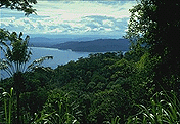 |
The main vegetation type found in eastern Madagascar is forest --
and in particular, dense evergreen forest (forêt ombrophile
sempervirente) with a canopy exceeding 30 m, which occurs at low elevations, as for example in the Baie d'Antongil. |
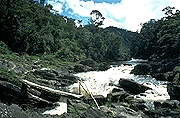 |
This same type of forest, with a closed canopy that usually
reaches up to 20-25 m in height, extends up to middle elevations
as well, such as about 1000 m in the Ranomafana National Park. |
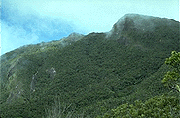 |
At even higher elevations a transition occurs to thicket (fourré)
that is shorter in stature, like that occurring around 1800 m on
the Marojejy massif in northeastern Madagascar. |
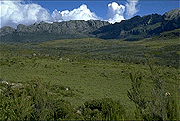 |
At the highest elevations a characteristic shrubland (formation
arbustive) occurs, rich in Ericaceae and Asteraceae, which is
found in places that are more exposed to severe climatic
conditions, like those found at ca. 1900 m on the Andringitra
massif, |
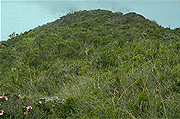 |
or on the summit area of Marojejy (2,133 m). |
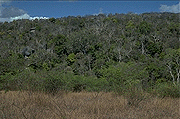 |
In much of the western part of the country, the principal natural
vegetation type is a deciduous forest (forêt décidue). Examples include the vegetation on Madagascar's limestone karsts (tsingy),
such as those found at the Ankarana Special Reserve in the far
north of the island, |
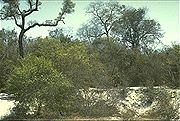 |
or forests on white sand (e.g., near Port Bergé in the
northwest). |
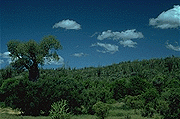 |
In the extreme southwest and across the southern part of
Madagascar, where conditions are even drier, a specialized
thicket vegetation (fourré) is dominated by members of the
endemic family Didiereaceae (e.g., in the dry parcel of the
Andohahela Reserve), |
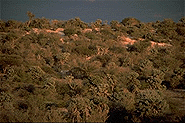 |
and by shrubby and arborescent species of Euphorbia, such as E. stenoclada (e.g., at Anakao south of Tuléar). |
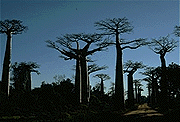 |
Species of baobabs, Adansonia, are also widespread throughout the
south and west, including majestic stands of A. grandidieri north of Morondava. |
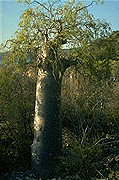 |
Other bottle-trees include Moringa drouhardii near Ianantsony south of Tuléar. |











